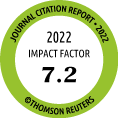Return to content in this issue
Allergen Profile of London Plane Tree Pollen: Clinical and Molecular Pattern in Central Spain
Nuñez-Borque E1, Betancor D2, Fernández-Bravo S1, Gómez-Cardeñosa A2, Esteban V1,3,
Garrido-Arandia M3,4, de las Heras M2, Pastor-Vargas C1,3,5*, Cuesta-Herranz J2,3*
1Department of Immunology, Instituto de Investigación Sanitaria Hospital Universitario Fundación Jiménez Díaz (IIS-FJD, UAM), Madrid, Spain
2Department of Allergy, Hospital Universitario Fundación Jiménez Díaz, Instituto de Investigación Sanitaria Fundación Jiménez Díaz (IIS-FJD,
UAM), Madrid, Spain
3RETIC ARADyAL, Instituto de Salud Carlos III, Spain
4Centro de Biotecnología y Genómica de Plantas (UPM-INIA), Madrid, Spain
5Department of Biochemistry and Molecular Biology, Universidad Complutense de Madrid, Madrid, Spain
*Both authors contributed equally
J Investig Allergol Clin Immunol 2022; Vol 32(5)
: 367-374
doi: 10.18176/jiaci.0702
Background: Platanus acerifolia (London plane tree) is a deciduous tree of the Platanaceae family. Sensitization to this plant varies with geography. Madrid, located in central Spain, has one of the highest London plane tree pollen concentration levels on the Iberian Peninsula.
Objectives: We evaluated both the clinical characteristics and the molecular sensitization pattern of patients with allergy to London plane tree pollen in the region of Madrid.
Patients and Methods: Thirty-eight patients allergic to London plane tree pollen were selected according to their clinical symptoms and positive results in skin prick testing and/or specific IgE determination. Serum was collected, and allergen components were evaluated using immunodetection techniques as well as ImmunoCAP. The IgE-binding proteins detected were identified and characterized using mass spectrometry.
Results: Analysis of serum samples from allergic patients revealed 9 IgE-binding bands in London plane tree pollen extract. Among these, the 45-kDa protein, which corresponded to Pla a 2, was detected in 76.3% of patients. However, the 18-kDa (Pla a 1) and 9-kDa (Pla a 3) bands were detected in 44.7% and 23.7% of sera, respectively. These results were confirmed using purified proteins. Characterization of the allergen revealed the 27-kDa protein to be glutathione-S-transferase.
Conclusions: The molecular profile of patients sensitized to London plane tree pollen differs from that reported in studies from other locations. In the population we studied, the prevalence of Pla a 2 was higher than that of Pla a 1 and Pla a 3. In addition, the minor allergen previously referred to as Pla a 4 was characterized as glutathione-S-transferase.
Key words: Plane tree, Platanus acerifolia, Pollen allergy, Allergen, Pla a 2



